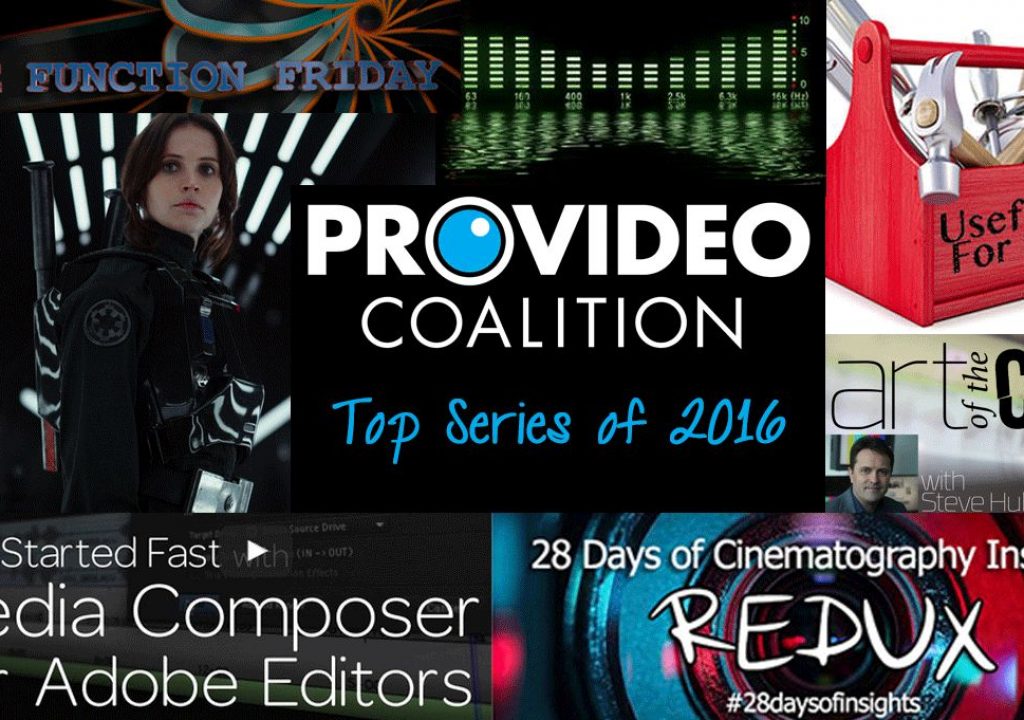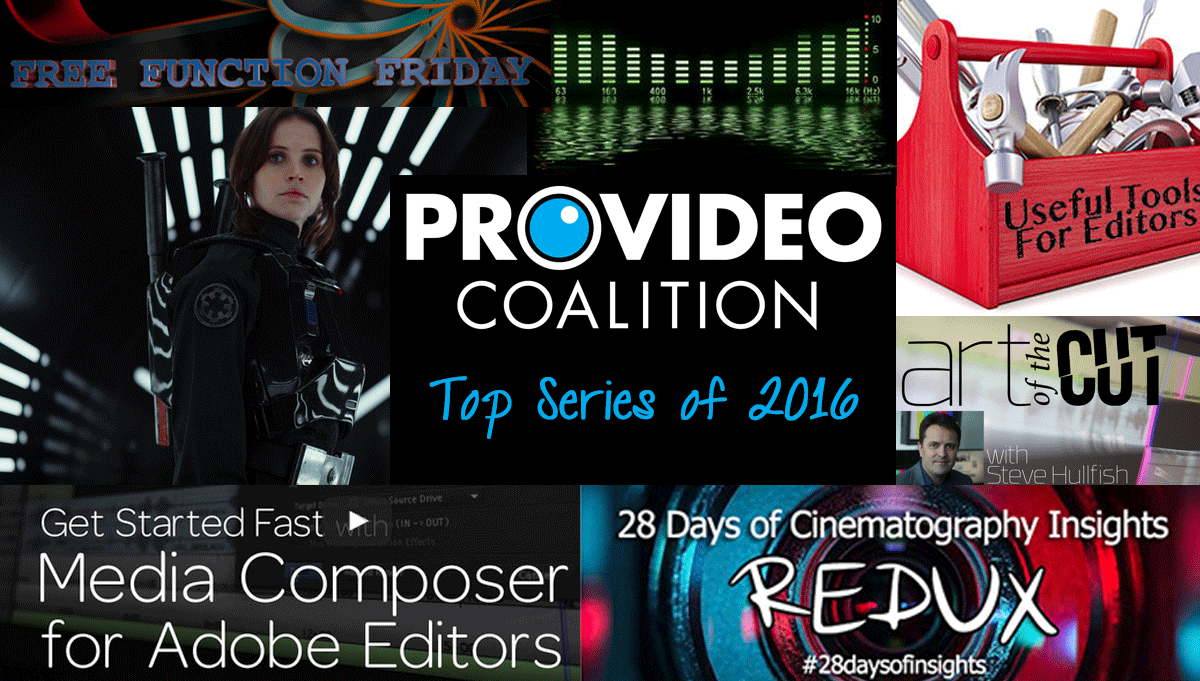
We’ve already taken a look at some of the biggest articles that were published in 2016 on PVC, but the ongoing series that were started, completed and updated in 2016 offer an even better look at the breadth of content that’s available on the site. Many of these series will continue to be updated and expanded upon in 2017.
After seeing features like 28 Days of Quicktips as well as CMG Hidden Gems over the previous couple years, PVC was able to able to greatly expand upon the number of articles and videos that were explored as an ongoing series in 2016. If there are any topics, tips or insights you’d like to see explored as a series please let us know.
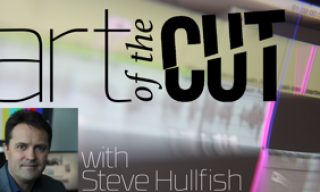 The Art of the Cut
The Art of the Cut
from Steve Hullfish
Steve Hullfish has been producing and editing award-winning television since the mid-1980s, and he relies on that experience when he connects with the top editors in the industry for his “Art of the Cut” interview series. The insights he’s able to talk through with fellow professionals who are at the height of their craft provide an incredible look at what it means to find, create and cultivate success as an editor.
While he’s conducted interviews with editors from some of the biggest films and TV shows in 2016 including Star Wars, Stranger Things, Ghostbusters and Captain Amercia: Civil War, just to name a few, his interview with legendary Oscar-winning editor, Anne Coates offers one of the best looks at the sort of insight you can only find in this series…
STEVE HULLFISH: Were there things about switching to computerized editing that you actually liked?
ANNE COATES: Nobody’s asked me that before. I suppose it’s the speed at which you can see alterations. But I always had my film cut to camera at the end of shooting, so I was fast anyway, but the speed. I really loved film, when you used to hold it up and look at the little squares. When they were conforming the film – my assistants would conform the film – and I would go into the rooms where they were working and take the film and look at it, feel it. The celluloid. I would never go back to film again, but I did love cutting on film. I didn’t have it scattered all over the place, but sometimes I did have a bit hanging around my neck.
28 Weeks of Post Audio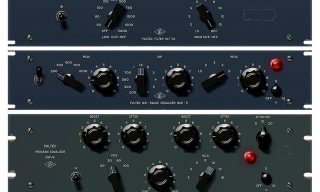
from Woody Woodhall
Taking a cue from the 28 Days of Quicktips series, Woody Woodhall has begun a series in which he’s exploring 28 different post audio insights, but the info he’s been laying out is a bit too detailed to be posted on a daily basis. Hence, 28 Weeks of Post Audio kicked off in November with an entry on dialog replacement. Followers can join the conversation with the hashtag #mixingmondays.
The series is up to Week 7 at the time of publishing, so there’s still plenty of content that’s set to be published. For a quick look at the sort of technical and practical detail Woody has and will continue to be laying out on a weekly basis, here’s a snippet from Week 6 which dealt with future proof audio…
At the end of the day filmmakers want a sale to get their work in front of an audience and use the funds to make a living and to make more films. Sometimes that selling process takes many months or even years, long after the mixing sessions are complete. When these projects do get the sale, if these stems have already been properly prepared, the filmmaker may already have what they need.
Free Function Friday
From David Torno
With the full After Effects ExtendScript Training series finished, creator David Torno took some time before starting and completing a new series in 2016 which dives further into the Adobe After Effects scripting language, ExtendScript. Publishing a new entry every Friday in the first part of this year, the Free Function Friday series wrapped up in July, meaning you can now watch the almost 50 tutorials at your convenience.
It’s a challenge to highlight a particular item since a series like this is meant to be looked at as a whole, but the layerPropMatchNames text and tutorial should give viewers a sense of what these tutorials will allow users to do…
As a simple example, the app name for layer masks is “Masks”, but there is a universal match name for it behind the scenes and that is “ADBE Mask Parade”. Since other languages of After Effects will change the actual name of “Masks” into the native language equivalent for the user, there had to be a consistent method of accessing and controlling the software. This is where the match names come into play. If you had made a script and you used “ADBE Mask Parade” for the property, it would find the property every time regardless if you were running the Japanese, Italian, Spanish, or English version of After Effects. If you had used “Masks”, then the property would only match if the English version of After Effects was running. So you can see how making multi language compatible scripts can be a bit more involved. You can certainly track down every language variant of the word “Masks” and do a search to then see which one matches, but that would be a very inefficient way to code.
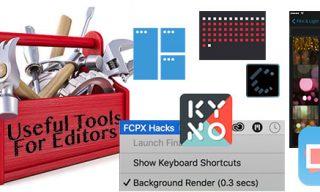 Useful Tools for the Editor
Useful Tools for the Editor
From Scott Simmons
Many of the series on PVC have a predetermined number of updates/entries to hit in order to complete the series, but the Useful Tools for the Editor series is not one of them. Published by Scott Simmons when there are enough new and useful tools to talk about, the series is a great look at updated/practical post-production tools which can impact how editors work on a daily basis.
It’s easy to get caught up in talk around what a certain tool will eventually be able to do, and that’s probably why the Now Shipping Edition of the series proved to be so popular. Practicalities are more important than potential, and it’s something Scott is always thinking about…
One of the more impressive tools from NAB 2016 was cineXinsert from Cinedeck and it is now available. We wrote about this in our NAB coverage but what cineXinsert does is it allows the insert editing of new media into a finished and mastered video file. Just imagine fixing a messed up piece of a QuickTime file without having to re-export the entire thing from your NLE. At $1,495 it’s not cheap but the time it might save (meaning you might make your airdate) could be priceless.
More Useful Tools for the Editor Articles
 MacBreak Studio
MacBreak Studio
From Mark Spencer
Another series published on PVC which is open ended rather than a set number of entries is MacBreak Studio, published by Mark Spencer. The series provides tips and tricks for anyone utilizing a Mac and/or FCPX to help add advanced techniques to a production workflow. The entries on PVC feature an original and exclusive write-up from Mark to give readers a better sense of what they have or are about to watch.
Mark typically publishes an entry every week, which means there’s plenty to look through for 2016 alone, much less the massive archive of tutorials he’s built up over the years. That makes selecting a single entry to highlight difficult, but his look at a 4K Timelapse workflow in Compressor provides specific insight around an important topic…
The new feature in Compressor is 4K support for Apple devices in the form of a new 4K preset. Before applying this preset, however, Steve shows us a neat and useful trick for creating a custom location for storing the rendered movie – neat in that in addition to selecting a location, you can also specify how the file gets named based on any combination of text and “tokens” which are bits of metadata about the source file, the preset, date, time, etc. In this case he assigns a name based on a combination of the movie content, the type of preset, and the date.
More MacBreak Studio Tutorials
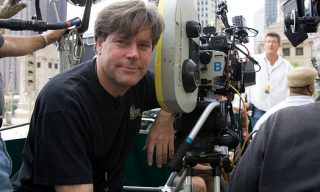
Art of the Shot
From Brian Hallett
Steve Hullfish is an editor who relies on his years of experience to spur the amazing conversations in his interviews, and that perspective is the same one DP Brian Hallett utilizes with the cinematographers he’s connected with for the Art of the Shot. Even though the series just kicked off this year, Brian has already been able to interview luminaries like Eric Lin and Greg Fraser, and a number of other interviews are lined up for next year.
Brian started off the series with an interview of Richard Crudo, and he was able to showcase the sort of technical and practical insight which can only come from working professionals…
BRIAN HALLETT: I’m going to round it back to the younger generation. Who succeeds at being a cinematographer?
RICAHRD CRUDO: Somebody who is really, really, really, really passionate about it – and who sticks to it. It’s no more complicated than that. The ASC has about 350 members. Every single one of us has come to that honor by a different road. Everybody has a different story; they’ve done different things and have come from different backgrounds. However, the one thing we all have in common is an overriding, all-encompassing passion for what we do. That’s in common for us all. Never give up. Never… And everybody needs a little luck. You have to get some breaks. No kidding, that has to happen for everybody. You’ve got to be tenacious and you’ve got to have the passion for it. If you do have that – trust me – you’ll find your way! Run your own race…one foot in front of the other.
28 Days of Cinematography Redux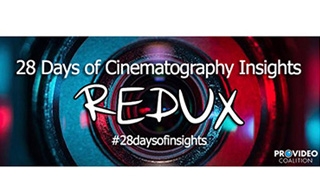
From Art Adams
While the full 28 Days of Cinematography Insights series first rolled out in 2015, a redux of it was republished this year complete with a few brand new entries at the end of the series which brought it up to 31 days. Over the course of those 31 days, cinematographer Art Adams answered questions that ranged from what he misses about film to the pliability of light in his typically brilliant but still accessible manner.
During the series Art talked through some incredibly detailed experiences that have to deal with things like color and lighting, but his ability to focus on the essentials of any particular topic is evident in the insight he lays out in his Day 31 update, which was published for the first time in 2016…
I’ve been accused of overthinking things on occasion. As a job approaches I ponder all the little details, all the options we have at our disposal, and all the things that can go wrong. Filmmaking is not a straightforward art: often we are fighting against physics, and something that appears to be a small part of the creative brief can quickly become a huge headache.
More 28 Days of Cinematography Redux
Get Started Fast with Media Composer for Adobe Editors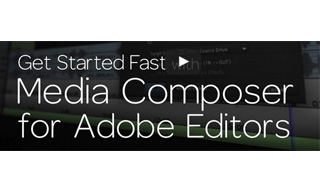
From Kevin McAuliffe
In talking about series published on PVC by Kevin McAuliffe, it would be easy enough to highlight his Let’s Edit with Media Composer, but his just recently begun five-part tutorial series designed to teach the fundamental differences between Premiere and Media Composer provide an especially relevant look at what it takes to get the most out of both systems, regardless of which one you prefer or happen to be using.
As of this writing, Kevin is only up to Part 2 of the series, but the details to talks and works through in this second part provide a great look at the critical details he has and will continue to explore…
This tutorial for Premiere Editors will help you wrap your head around what to do once you have your media inside of Media Composer AND, we also cover working in larger than HD projects, and ways that you can make sure that you get the absolute best performance out of Media Composer, no matter the system you’re working on (laptop vs desktop). Coming up in Lesson 3, we’re going to talk about Media Management, so you can figure out what Media Composer has exactly done with your media, so whether you need to delete or archive a project, you’ll always have control of your media, right at your fingertips.
More Get Started Fast with Media Composer for Adobe Editors

Filmtools
Filmmakers go-to destination for pre-production, production & post production equipment!
Shop Now